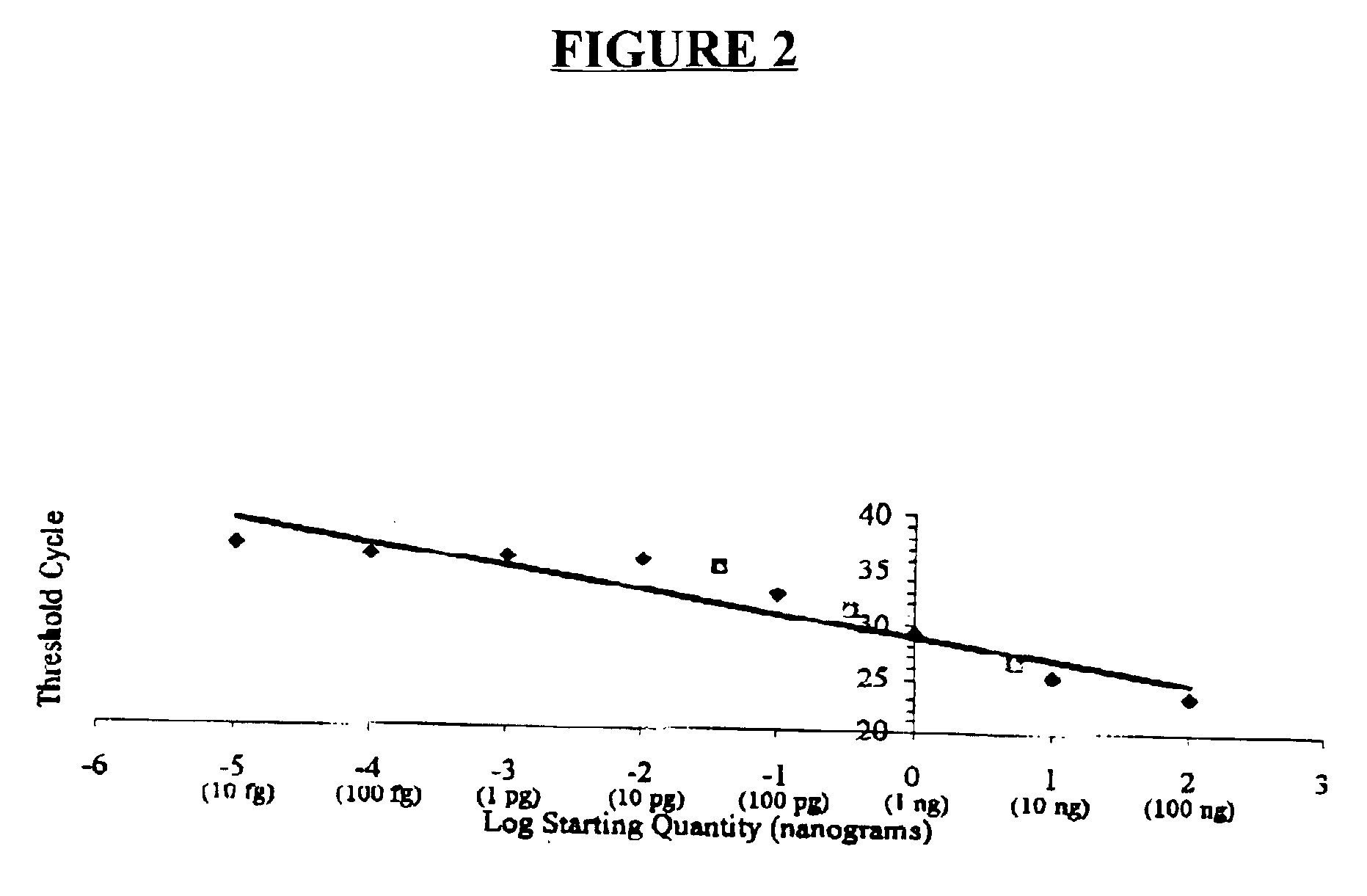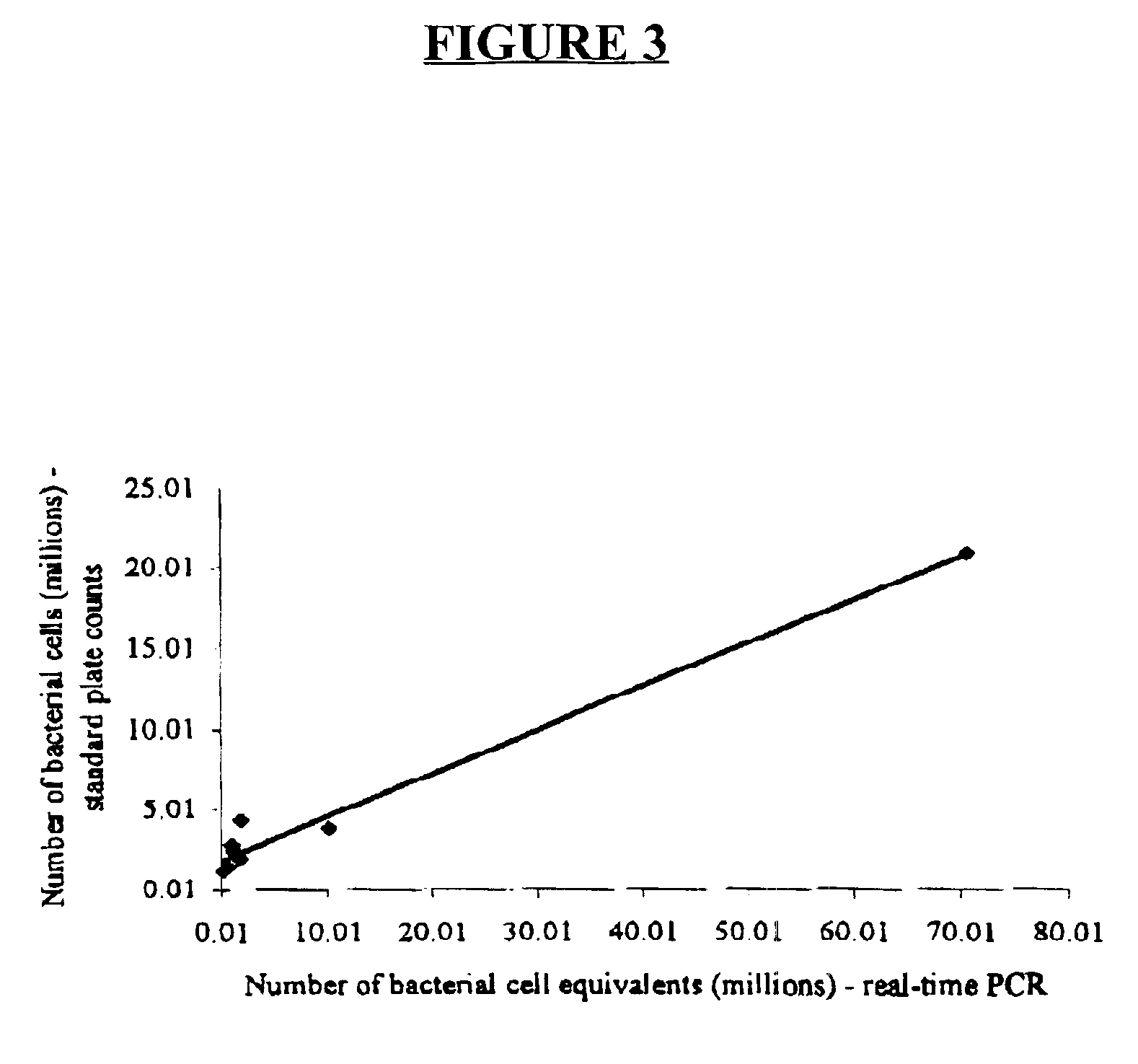Real-time PCR assay of the bacterium Edwardsiella ictaluri in channel catfish
a technology of edwardsiella ictaluri and catfish, which is applied in the field of genetically based highly specific detection assays, can solve the problems of insufficient detection speed, slow and reactive process, and insufficient aid in disease prevention and control in commercial catfish farms, so as to improve the resistance of fish to disease, prevent fish infection, and improve the effect of disease resistan
- Summary
- Abstract
- Description
- Claims
- Application Information
AI Technical Summary
Benefits of technology
Problems solved by technology
Method used
Image
Examples
examples
Bacterial Strain and Culturing Information
[0024]A frozen culture of Edwardsiella ictaluri (S97-773) was streaked onto BHI agar plates and allowed to incubate for 48 hours at 27° C. An isolate colony was aseptically removed from the agar and used to inoculate a 10 ml BHI broth culture. The culture was allowed to incubate for 24 hours at 27° C., at which time a sample from the culture was removed and enumerated using standard plate count methods on tryptic soy agar plates supplemented with 5% sheep's blood. Additionally, 10 species of biochemically similar bacteria (Flavobacter columnaris, Aeromonas hydrophila, Edwarsiella tarda, Escherichia coli, Acinetobacter twoffli, Enterobacter cloacae, Klebsiella pneumoniae, Pseudomonas aeruginosa, Serratia adoifera, Proteus vulgaris) were cultured in 10 ml of BHI broth as above. These 10 species were subsequently used for tests of specificity of the primer / probe set. Each species is considered to be a potential contaminant in natural ponds.
Samp...
PUM
| Property | Measurement | Unit |
|---|---|---|
| Electrical resistance | aaaaa | aaaaa |
| Fluorescence | aaaaa | aaaaa |
Abstract
Description
Claims
Application Information
 Login to View More
Login to View More - R&D
- Intellectual Property
- Life Sciences
- Materials
- Tech Scout
- Unparalleled Data Quality
- Higher Quality Content
- 60% Fewer Hallucinations
Browse by: Latest US Patents, China's latest patents, Technical Efficacy Thesaurus, Application Domain, Technology Topic, Popular Technical Reports.
© 2025 PatSnap. All rights reserved.Legal|Privacy policy|Modern Slavery Act Transparency Statement|Sitemap|About US| Contact US: help@patsnap.com



